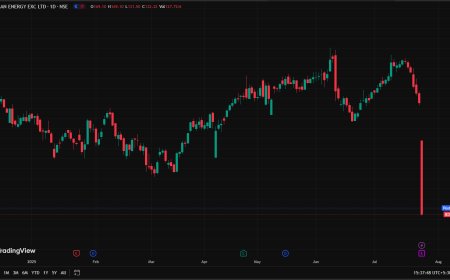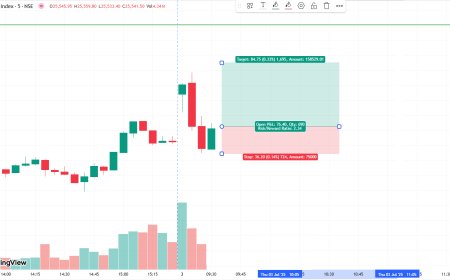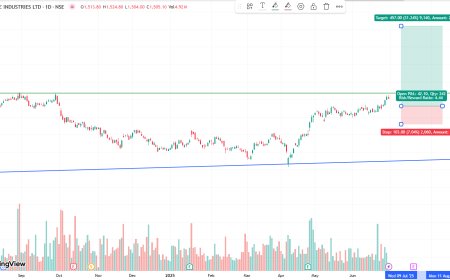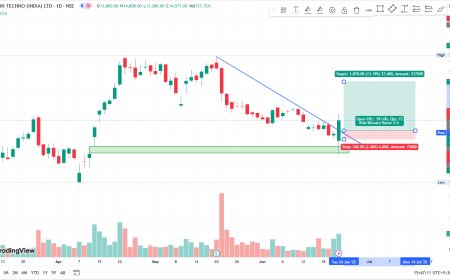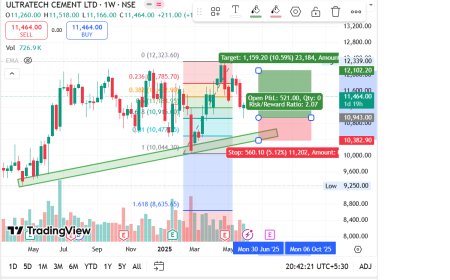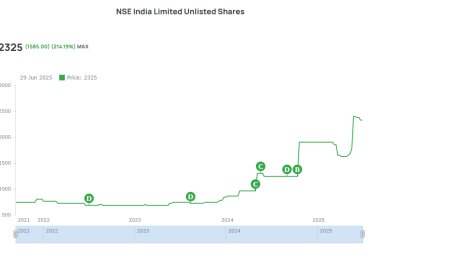Weak UK Jobs Data Sends Down Pound and Boosts BOE Rate Cut Bets
The British pound fell after weak UK jobs data raised expectations of a Bank of England rate cut. Analysts weigh in on what this means for markets and investors.

Pound Falls as UK Labour Market Weakens
Market eyes Bank of England for possible rate cuts amid economic slowdown signals
The British pound slipped on Tuesday after the release of weak employment data from the UK, sparking renewed expectations that the Bank of England (BOE) may cut interest rates sooner than previously anticipated. The soft labour market figures have added to growing concerns about the fragility of the UK’s economic recovery and heightened investor bets on an earlier pivot by the central bank.
Job Market Cools Sharply
According to the Office for National Statistics (ONS), UK unemployment ticked up to 4.4% in the three months to April 2025, the highest level since late 2021. The employment rate fell to 74.3%, marking a noticeable decline from 75.7% a year earlier. Meanwhile, wage growth, while still strong, showed signs of moderating.
Regular pay (excluding bonuses) rose by 5.9% year-on-year, slightly lower than the 6.0% forecasted by analysts. The number of job vacancies also dropped for the 23rd consecutive month, reflecting employers’ hesitancy to hire amid economic uncertainty.
"This labour market data paints a picture of a slowing economy, where businesses are becoming increasingly cautious," said Sandra Hepworth, Senior UK Economist at Capital Macro. "The BOE may now be under pressure to act sooner on rates to avoid a deeper slowdown."
Sterling Slumps Against Major Currencies
In currency markets, the British pound fell by 0.5% against the US dollar to $1.268 and slipped 0.4% against the euro to €1.175. Currency traders interpreted the jobs report as a dovish signal for the BOE’s monetary policy, as rate cuts typically reduce the yield advantage for the pound.
"The combination of softening wage pressures and a rising jobless rate suggests the BOE will need to shift gears soon," said Marc Fenton, a forex strategist at ING. "Markets are now pricing in a nearly 80% chance of a rate cut by August."
BOE Rate Cut Bets Surge
The probability of a BOE rate cut by August 2025 surged following the release, with swap markets now fully pricing in a 25 basis point cut. Previously, traders had expected the central bank to hold until late autumn.
The BOE’s key interest rate currently stands at 5.25%, the highest in over 15 years, following a series of hikes meant to combat persistent inflation. However, with inflation easing and economic indicators turning softer, policymakers may be poised to reverse course.
"This shift in labour data could be the final straw for the BOE," noted Neil Grant, Chief Economist at Luminor Advisory. "We expect the Bank to start cutting by summer to prevent a more entrenched slowdown, especially with consumer spending already weakening."
Market Reactions Across Asset Classes
UK bond markets rallied on the news, with 10-year gilt yields dropping by 7 basis points to 4.02%, reflecting rising expectations of policy easing. Equity markets were mostly flat, with the FTSE 100 ending the day slightly lower, pressured by financial and retail stocks.
"The rate-sensitive sectors are likely to see some relief if easing begins, but there is also a concern that weaker labour data could mean lower consumer demand," said Amira Bolton, a senior equities analyst at Helix Securities.
Broader Economic Implications
The jobs data adds to a string of mixed economic signals from the UK. While inflation is gradually returning toward the BOE’s 2% target—currently sitting at 2.1%—other metrics such as retail sales and consumer confidence remain fragile.
Additionally, ongoing geopolitical tensions, higher mortgage costs, and subdued business investment continue to weigh on economic momentum.
Investor Outlook: Balancing Risk and Reward
For investors, the outlook hinges on the timing and extent of BOE’s policy shift. Rate cuts could support equities, particularly in the real estate and consumer discretionary sectors, while potentially weakening the pound further.
"Investors need to be cautious but opportunistic," said Julius Banerjee, Portfolio Manager at Clarendon Asset Management. "A rate cut cycle would boost domestic growth stocks, but currency risk and inflation volatility will remain key headwinds."
The UK’s softening jobs market has significantly altered the monetary policy landscape. With the pound falling and rate cut expectations rising, the focus now shifts to the Bank of England’s next moves. Whether policymakers opt to preemptively ease or wait for further confirmation will shape not just market sentiment but the trajectory of the UK economy heading into the second half of 2025.
What's Your Reaction?
 Like
0
Like
0
 Dislike
0
Dislike
0
 Love
0
Love
0
 Funny
0
Funny
0
 Angry
0
Angry
0
 Sad
0
Sad
0
 Wow
0
Wow
0





































